Research
My research interests are primarily in the fields of Human-Computer Interaction and Accessibility. Through a combination of iterative prototyping and human centered design, I am developing workflows to support spatial information access for people who are blind. Through more controlled studies, I look to understand human perception to inform the design of these new interfaces.
Read a complete list of my publications
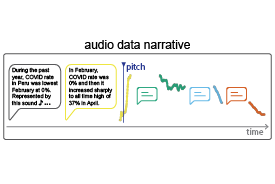
Supporting Accessible Data Visualization Through Audio Data Narratives
To address the need for accessible data representations on the web that provide direct, multimodal, and up-to-date access to live data visualization, we investigate audio data narratives –which combine textual descriptions and sonification (the mapping of data to non-speech sounds). We present a dynamic programming approach to generate data narratives considering perceptual strengths and insights from an iterative co-design process. Data narratives support users in gaining significantly more insights from the data.
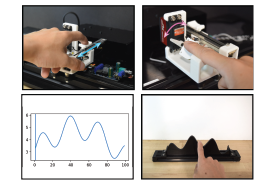
Slide-Tone and Tilt-Tone: 1-DOF Haptic Techniques for Conveying Shape Characteristics of Graphs to Blind Users
To improve interactive access to data visualizations, we introduce two refreshable, 1-DOF audio-haptic interfaces based on haptic cues fundamental to object shape perception. These devices provide finger position, fingerpad contact inclination, and sonification cues. Our research offers insight into the benefits, limitations, and considerations for adopting these haptic cues into a data visualization context.

COVID-19 Highlights the Issues Facing Blind and Visually Impaired People in Accessing Data on the Web
Dissemination of data on the web has been vital in shaping the public’s response during the COVID-19 pandemic. We postulated the increased prominence of data might have exacerbated the accessibility gap for the Blind and Visually Impaired (BVI) community and exposed new inequities. Based on a survey (n=127) and contextual inquiry (n=12), we present observations that provide an understanding of the impact access or inaccess has on the BVI community and implications for improving the technologies and modalities available to disseminate data-driven information on the web.
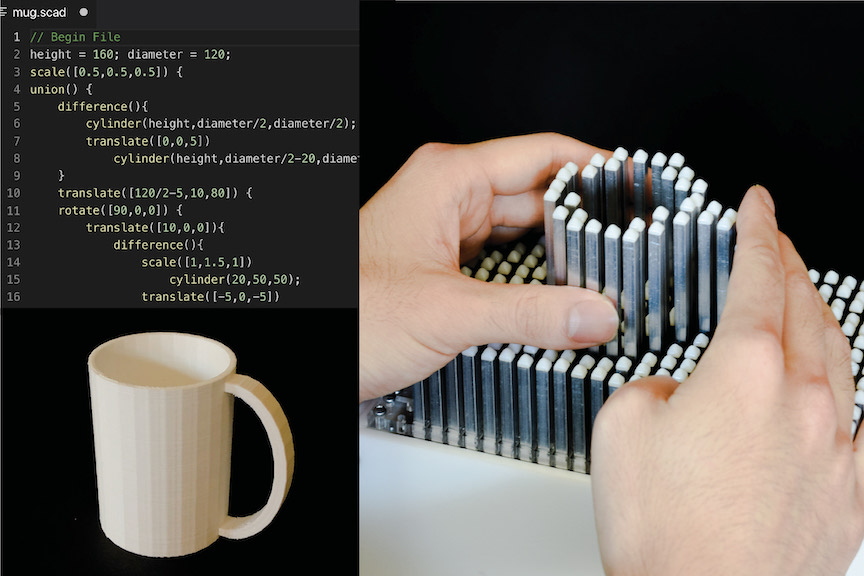
shapeCAD: An Accessible 3D Modelling Workflow for the Blind and Visually-Impaired Via 2.5D Shape Displays
We describe our participatory design process towards designing an accessible 3D modelling workflow for the blind and visually-impaired. We discuss interactions that enable blind users to design, program, and create using a 2.5D interactive shape display.
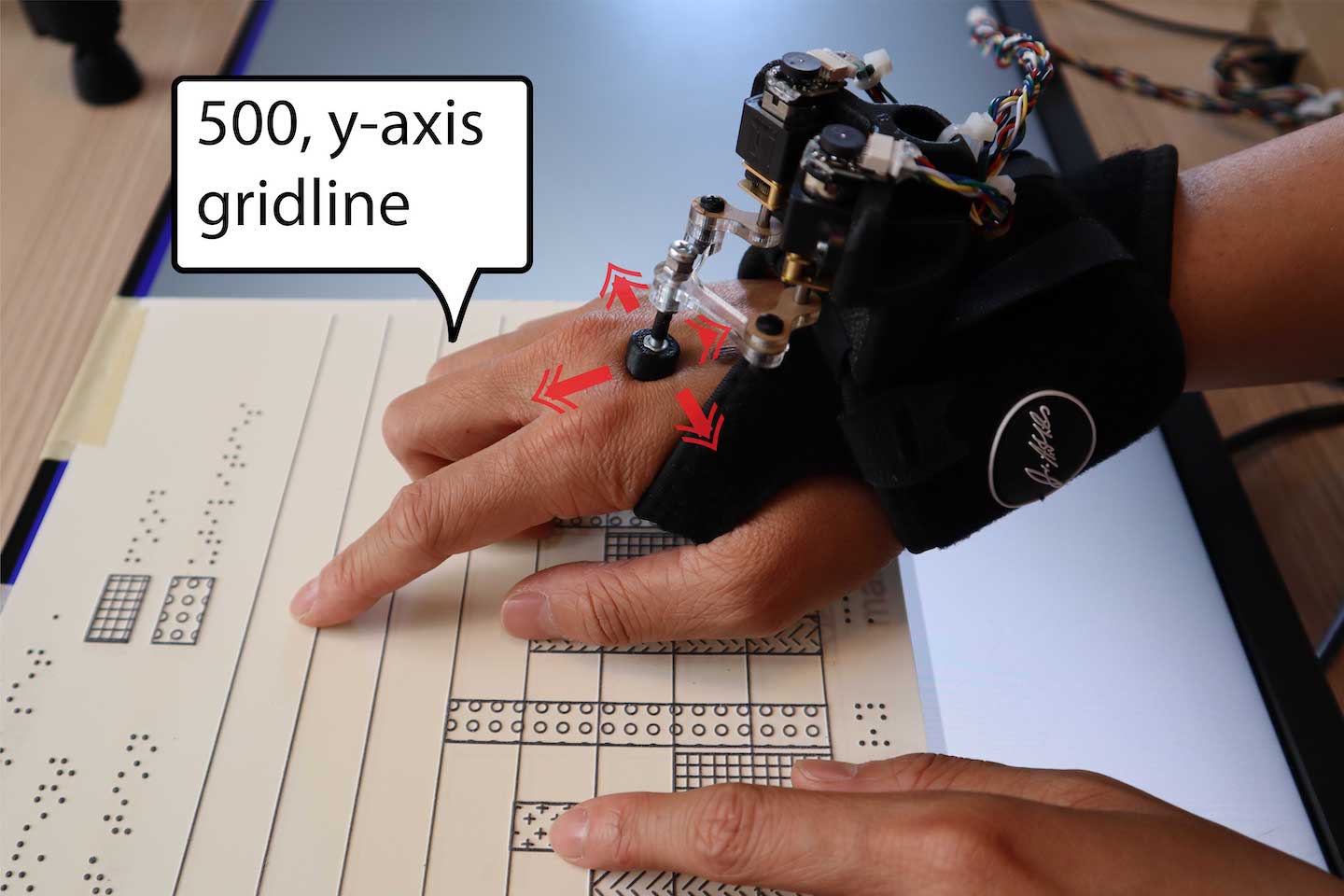
PantoGuide: A Haptic and Audio Guidance System To Support Tactile Graphics Exploration
Tactile graphics interpretation is an essential part of building tactile literacy and often requires individualized in-person instruction. PantoGuide is a low-cost system that provides audio and haptic guidance cues while a user explores a tactile graphic. We envision scenarios where PantoGuide can enable students to learn remotely or review class content asynchronously.

Constructive Visualization to Inform the Design and Exploration of Tactile Data Representations
As data visualization has become increasingly important in our society, many challenges prevent people who are blind and visually impaired (BVI) from fully engaging with data graphics. We adpt a constructive visualization framework, using simple and versatile tokens to engage non-data experts in the construction of tactile data representations.
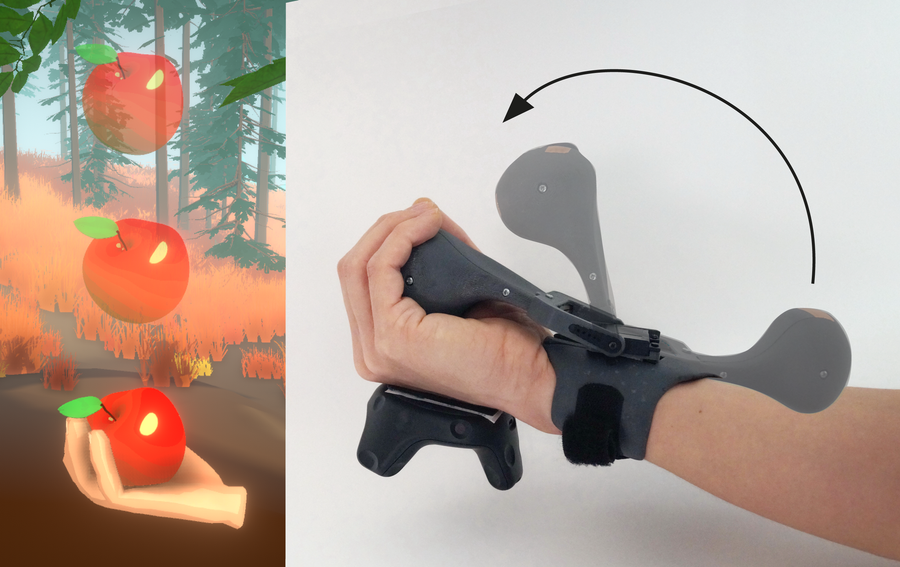
Haptic PIVOT: On-Demand Handhelds in VR
PIVOT is a wrist-worn haptic device that renders virtual objects into the user’s hand on demand. Its simple design comprises a single actuated joint that pivots a haptic handle into and out of the user’s hand, rendering the haptic sensations of grasping, catching, or throwing an object – anywhere in space .

Virtual Reality Without Vision: A Haptic and Auditory White Cane to Navigate Complex Virtual Worlds
How might virtual reality (VR) aid a blind person in familiarization with an unexplored space? This project explores the design of an immersive VR haptic and audio experience accessible to people who are blind with the goal of facilitating orientation and mobility training.
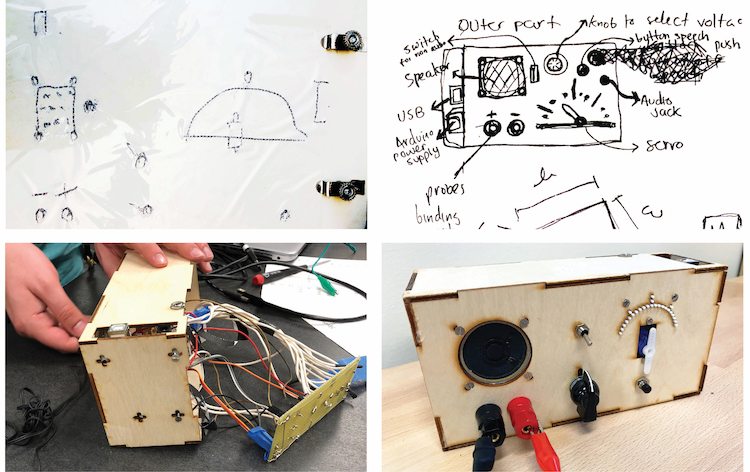
Making Nonvisually: Lessons from the Field
The Maker movement promises access to activities from crafting to digital fabrication for anyone to invent and customize technology. But people with disabilities, who could benefit from Making, still encounter significant barriers to do so. We share our personal experiences Making nonvisually and supporting its instruction through a series of workshops where we introduced Arduino to blind hobbyists.
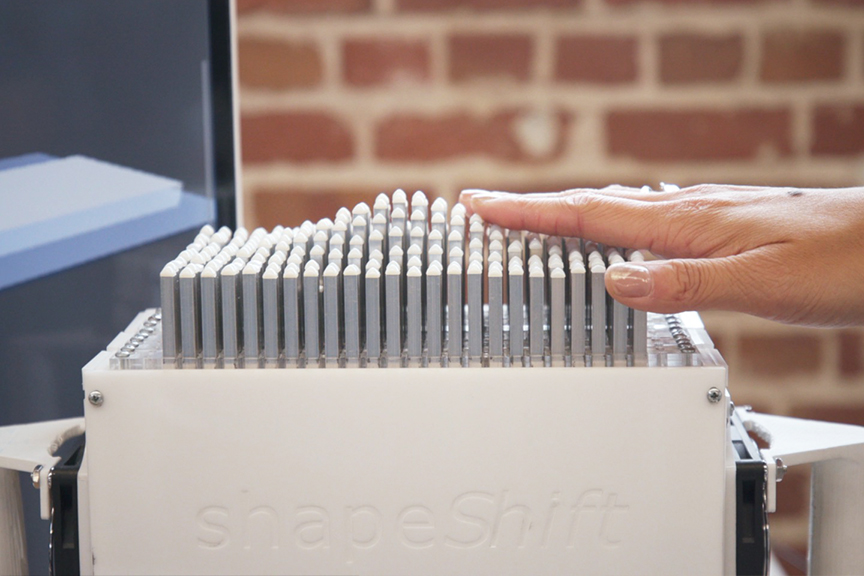
shapeShift: A Mobile Tabletop Shape Display for Tangible and Haptic Interaction
We explore interactions enabled by 2D spatial manipulation and self-actuation of a mobile tabletop shape display (e.g. manipulating spatial-aware content, an encountered-type haptic device, etc). We present the design of a novel open-source shape display platoform called shapeShift.
Previous Work
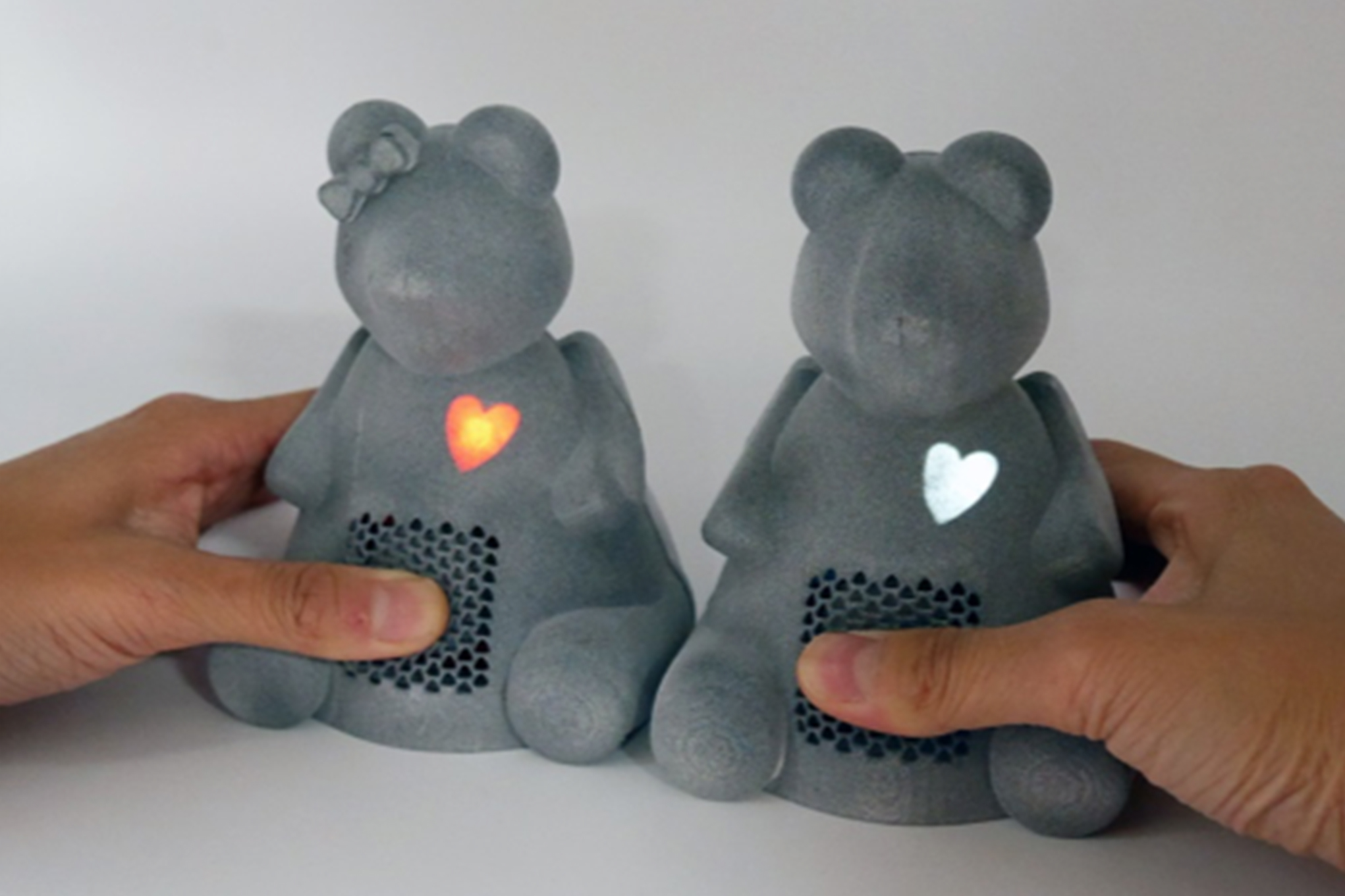
An Exploration of 3D-Printed Metamaterial Structures
Investigating how we might leverage 3D printed auxetic properties to design parts with embedded sensing and interactivity using HP Inc's novel multi jet fusion 3D printer.

Holoneedle: augmented reality guidance system for needle placement investigating the advantages of three-dimensional needle shape reconstruction
An augmented reality guidance system for needle placement in tissue using needle shape reconstruction and sensing.

Investigating Tangible Collaboration for Design Towards Augmented Physical Telepresence
Exploration of shared workspaces using mixed reality physical embodiment.
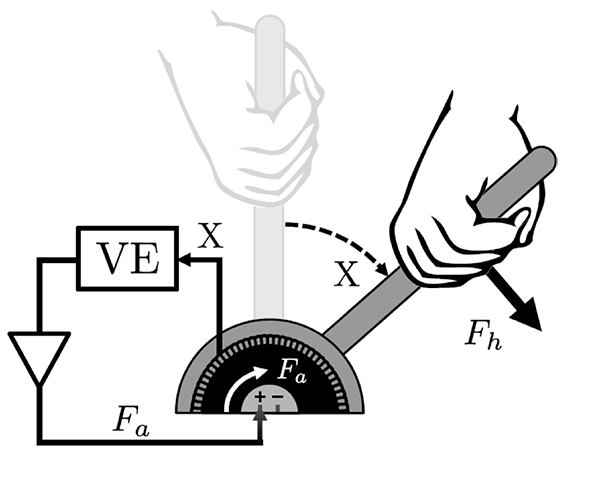
Characterizing the effect of time delay and low-pass filtering on human perception of stiffness and damping
Characterizing the effect of time delay and low-pass filtering on human perception of stiffness and damping in haptic displays.
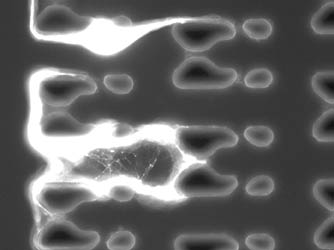
Lam Lab
Investigated the interaction of neutrophil extracellular traps (NETs) and whole blood in thrombosis. Developed a children's educational outreach program (BME HealthReach) to implement at hospitals.